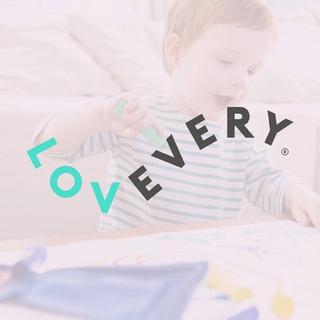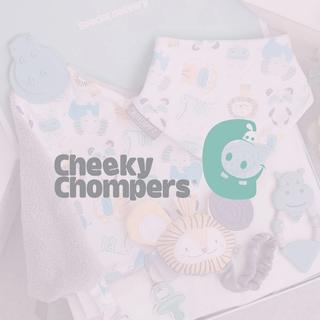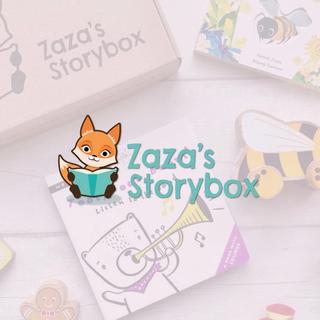
- Home
- Join The HiPP BabyClub
Join the HiPP BabyClub
From pregnancy to birth, babyhood to toddler days, our BabyClub is here to support you throughout your parenting journey. Join us for great prizes, amazing offers, and plenty of tips and tricks from our Experts and HiPP parents.

HiPP BabyClub benefits:






Why parents choose HiPP BabyClub
We asked some of our current members to share what they love most about our BabyClub, here is what they had to say:
Partnerships
Our BabyClub Partners offer exclusive discounts on a range of products designed to make your life that little bit easier.

Ergobaby
Ergobaby offers a wide range of award-winning newborn essentials: baby carriers, nursing pillows, strollers, sleeping products, baby bouncers and high chairs that fit seamlessly, comfortably, and safely into millions of families’ daily lives.

My 1st Years
My 1st Years are the leading personalised baby brand in the world. With the most adorable range of gorgeous gifts consisting of robes, blankets and bodysuits, wonderful wooden toys, cuddly companions, brilliant backpacks and the cutest clothing!

Daisy First Aid
Daisy First Aid offers fun and fear-free first aid courses designed specifically for parents and child carers teaching skills they need to save a life and to treat the most common accidents and emergencies. Babies and breastfeeding are very welcome too.

Grass & Air
Grass & Air is an outerwear and swimwear brand bringing fun playwear that makes it easy for kids to get outdoors for adventures, whatever the weather.

Folk & Thread
Folk & Thread offers award-winning organic baby sleep essentials—crafted from sustainably sourced cotton to provide comfort, safety, and peace of mind, night after night.

Lovevery
Lovevery’s Montessori-inspired play essentials are designed by child development experts and distilled to their simplest, purest purpose: to give your child's developing brain exactly what it needs at every stage.

Cheeky Chompers
Cheeky Chompers is an award-winning female led brand. Their range of teething must-haves and beautiful gifts help solve little problems for little people.

My Mummy Teacher
Offering playful learning products and services, such as adaptable activity cards and educational packs for ages 1 to 8, the brand empowers parents and professionals to engage, educate, and entertain children through enjoyable and effective play.

Little Muddy Boots
Little Muddy Boots offer unique gardening and nature classes for 1-6 year olds. We aim to inspire outdoor play, hands on learning and time spent as a family making memories.

Bumps & Burpees
Supporting women through pregnancy and motherhood with safe and fun exercise classes and specialist fitness advice. Cardio, strength, yoga, Pilates, stretch and mobility.

Nimble Cares
Nimble creates safe products for babies and children that actually work. We use only the essential ingredients needed to get the job done, nothing more. Plant-based, vegan, eco-friendly, ideal for sensitive skin.

Zaza's Storybox
A ZaZa’s Storybox book subscription is the perfect way to introduce your child to the joy of reading. ZaZa’s Storybox carefully select age-appropriate books for each subscription box so your child gets books that are relevant and that they will enjoy reading over and over again.

Bellamoon
BellaMoon is a pregnancy, breastfeeding and attachment parenting brand specialising in pregnancy pillows, nursing and rest systems and solutions to help aid the Motherhood journey for both mum and baby.

Nana's Manners
Mealtimes are about more than just eating, so we design unique, innovative, stylish products that make precious time around the table easy and enjoyable for children and parents.

Babymel
Babymel believe becoming a parent doesn't mean you have to compromise your style. So they have lovingly designed a range of changing bags for the modern parents of today.

Bundlee
Bundlee is the sustainable baby clothes rental service for modern parents. Swap out your little ones' wardrobe as they grow and rent from the brands you love, saving you time, money, space, and the planet.

Easy2Name
Easy2Name produce a wide range of labelling/personalised products with a mission to make parents lives that little bit easier.

Ergobaby
Ergobaby offers a wide range of award-winning newborn essentials: baby carriers, nursing pillows, strollers, sleeping products, baby bouncers and high chairs that fit seamlessly, comfortably, and safely into millions of families’ daily lives.

My 1st Years
My 1st Years are the leading personalised baby brand in the world. With the most adorable range of gorgeous gifts consisting of robes, blankets and bodysuits, wonderful wooden toys, cuddly companions, brilliant backpacks and the cutest clothing!

Daisy First Aid
Daisy First Aid offers fun and fear-free first aid courses designed specifically for parents and child carers teaching skills they need to save a life and to treat the most common accidents and emergencies. Babies and breastfeeding are very welcome too.

Grass & Air
Grass & Air is an outerwear and swimwear brand bringing fun playwear that makes it easy for kids to get outdoors for adventures, whatever the weather.

Folk & Thread
Folk & Thread offers award-winning organic baby sleep essentials—crafted from sustainably sourced cotton to provide comfort, safety, and peace of mind, night after night.

Lovevery
Lovevery’s Montessori-inspired play essentials are designed by child development experts and distilled to their simplest, purest purpose: to give your child's developing brain exactly what it needs at every stage.

Cheeky Chompers
Cheeky Chompers is an award-winning female led brand. Their range of teething must-haves and beautiful gifts help solve little problems for little people.

My Mummy Teacher
Offering playful learning products and services, such as adaptable activity cards and educational packs for ages 1 to 8, the brand empowers parents and professionals to engage, educate, and entertain children through enjoyable and effective play.

Little Muddy Boots
Little Muddy Boots offer unique gardening and nature classes for 1-6 year olds. We aim to inspire outdoor play, hands on learning and time spent as a family making memories.

Bumps & Burpees
Supporting women through pregnancy and motherhood with safe and fun exercise classes and specialist fitness advice. Cardio, strength, yoga, Pilates, stretch and mobility.

Nimble Cares
Nimble creates safe products for babies and children that actually work. We use only the essential ingredients needed to get the job done, nothing more. Plant-based, vegan, eco-friendly, ideal for sensitive skin.

Zaza's Storybox
A ZaZa’s Storybox book subscription is the perfect way to introduce your child to the joy of reading. ZaZa’s Storybox carefully select age-appropriate books for each subscription box so your child gets books that are relevant and that they will enjoy reading over and over again.

Bellamoon
BellaMoon is a pregnancy, breastfeeding and attachment parenting brand specialising in pregnancy pillows, nursing and rest systems and solutions to help aid the Motherhood journey for both mum and baby.

Nana's Manners
Mealtimes are about more than just eating, so we design unique, innovative, stylish products that make precious time around the table easy and enjoyable for children and parents.

Babymel
Babymel believe becoming a parent doesn't mean you have to compromise your style. So they have lovingly designed a range of changing bags for the modern parents of today.

Bundlee
Bundlee is the sustainable baby clothes rental service for modern parents. Swap out your little ones' wardrobe as they grow and rent from the brands you love, saving you time, money, space, and the planet.

Easy2Name
Easy2Name produce a wide range of labelling/personalised products with a mission to make parents lives that little bit easier.

